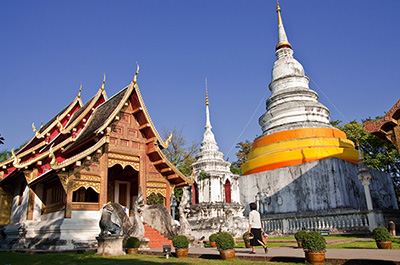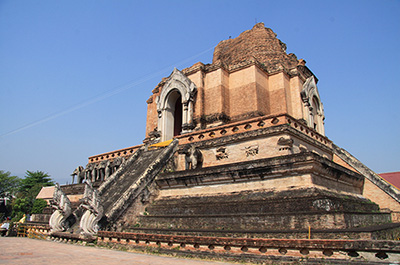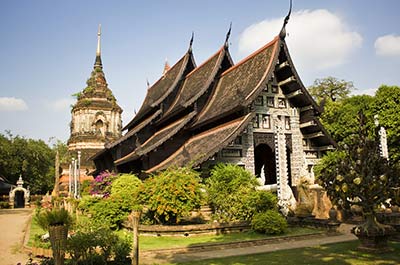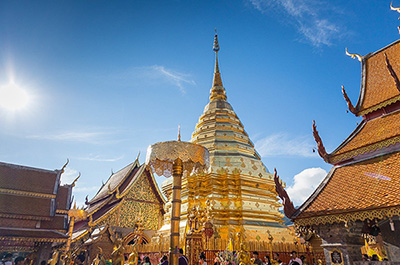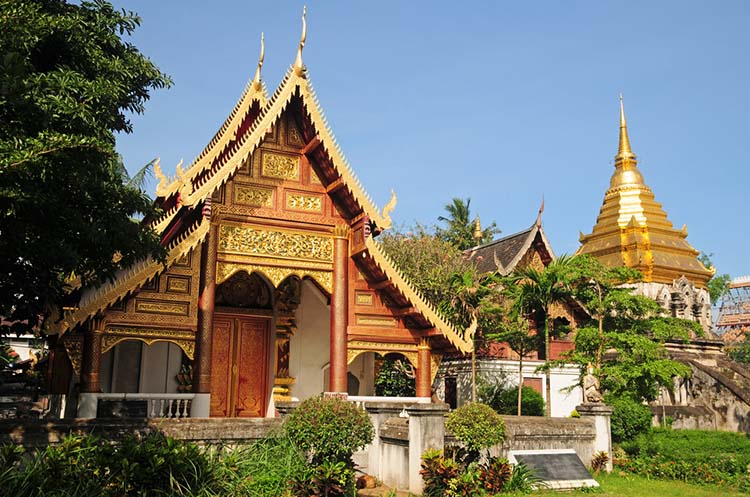
Wat Chiang Man
Chiang Mai’s oldest temple
Northeast corner of the old walled town
Chiang Mai
The Wat Chiang Man is the oldest temple in Chiang Mai and goes back all the way to the founding of the city in 1296.
When King Mengrai decided to build a new city and make it the new capital of the Lanna Kingdom, he build the Wat Chiang Man as the first temple of the new city on the site he used to supervise the construction of Chiang Mai. The temple holds several very old and important Buddha images.
Structures of the Wat Chiang Man
The chedi
Like in most wats, the oldest structure is the chedi. The chedi named Chang Lom Chedi or Elephant Chedi sits on a square base supporting a second level of grey stone that is surrounded by 15 elephants that seem to emerge from it.
On top sits the gilded upper part of the chedi, which contains a relic chamber. The chedi is a mixture of Lanna and Singhalese styles.
The large viharn
The larger of the two viharns is an impressive building with a three tiered roof. The front of the Lanna style viharn is decorated with wood carvings in gold and ochre colors.
The building was renovated in the 1920’s by the famous monk Khru Ba Srivichai. This viharn houses the oldest Buddha image in Chiang Mai. The image is a standing Buddha holding an alms bowl, the inscription on its base dates it to 1465.
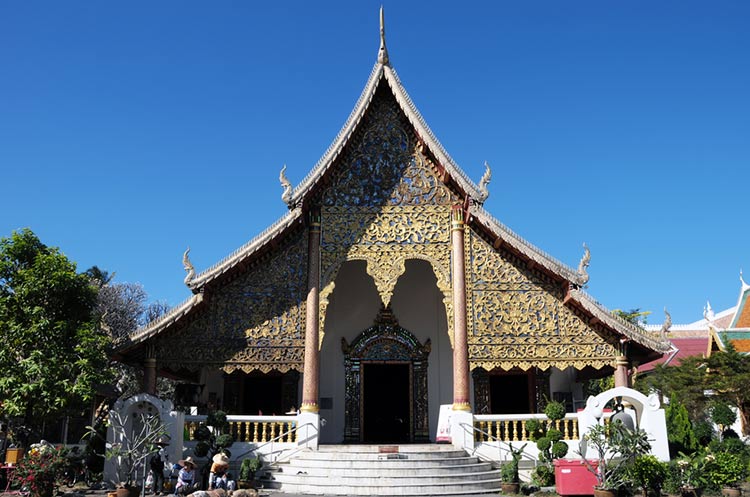
The small viharn
The smaller of the viharns which is also built in Lanna style contains two small, but very old and important Buddha images. The stairs to the viharns entrance are guarded by Nagas, a mythical snake like creature.
Opposite the entrance behind the large central Buddha image is a ku, a throne like structure where the two highly revered images are kept.
Phra Sila Buddha image
The Phra Sila Buddha image is a bas relief stele, sculpted from stone depicting a standing Buddha. The image was most likely made in Sri Lanka more than a thousand years ago. The highly revered image is believed to hold the power of bringing rain and therefore plays an important role during Songkran festival held in April at the end of the dry season.
Phra Sae Tang Khamani Buddha image
The Phra Sae Tang Khamani is a small Buddha image carved from quartz crystal, and it is therefore also known as the Crystal Buddha. It is not known exactly how old it is, but it is believed to have belonged to Chama Thewi, Queen of Hariphunchai in the 8th century.
When at the end of the 13th century King Mengrai of Chiang Mai besieged and burned Hariphunchai, the Phra Sae Tang Khamani image survived the destruction and was therefore believed to hold protective powers.
The ubosot
The ubosot or ordination hall of the Wat Chiang Man dates from the 19th century. The front facade is of the bot is decorated with beautifully carved wooden details in ochre colors. A stone stele in front of the ubosot dated 1581 mentions the exact date the city of Chiang Mai was founded, namely April 12th, 1296.
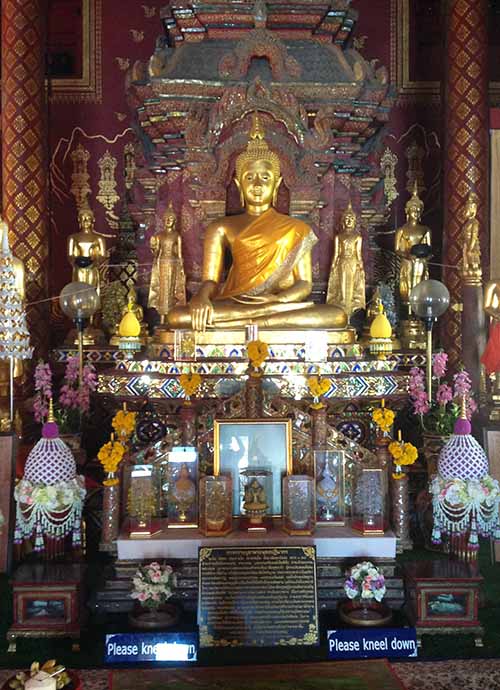
The Ho Trai or scripture library
The Ho Trai where the wat’s Buddhist scriptures are kept is a fairly small wooden building on top of a white stone base to protect the scriptures from flooding and pests. This Ho Trai is a lot less elaborate than the one at the Wat Phra Singh.
Location
The Wat Chiang Man is located in the Northeast corner of the old walled part of Chiang Mai, between Phra Pok Klao 13 road and Ratchaphakhinai 1 road.
How to get to the Wat Chiang Man
Entering the old walled part of the city through the Chang Puak gate in the North wall, take a left turn to Ratchaphakhinai 1 road. The temple is then on the right side after about 200 meters.
Opening hours
The temple complex is open daily from 6 am until 5 pm.
Entrance fee
Admission is free.
